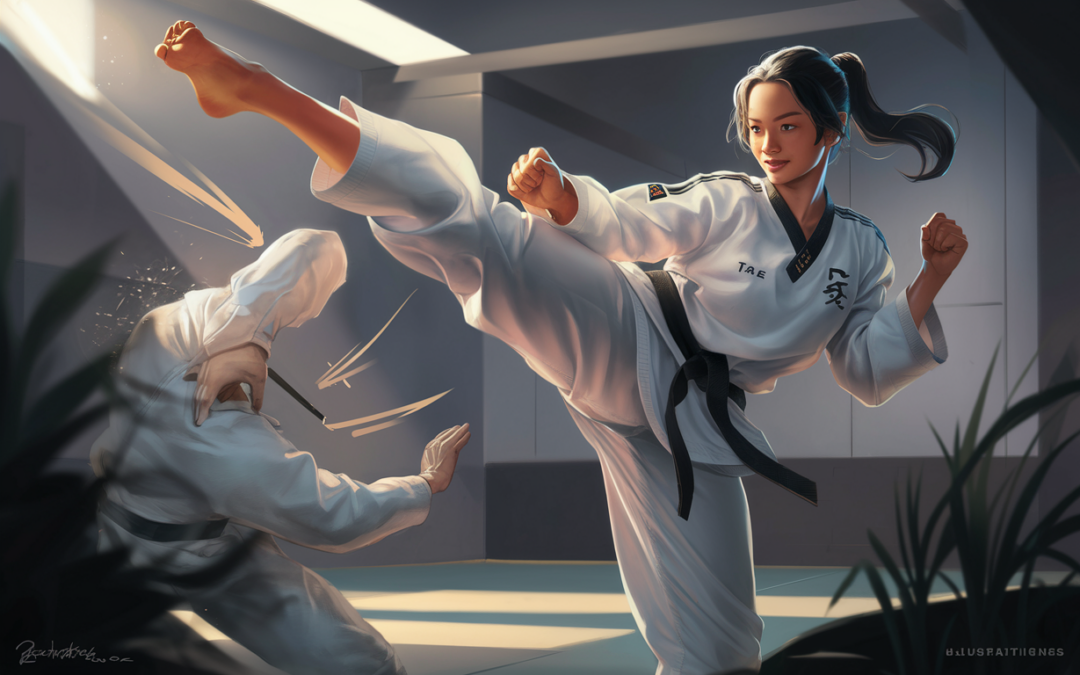Taekwondo: A Practical Approach to Self-Defense
Taekwondo is an incredibly effective form of self-defense that offers numerous benefits beyond just physical protection. People of all ages and fitness levels can use Taekwondo techniques to defend themselves in real-life situations.
Key Takeaway: Taekwondo is not only a martial art but also a practical self-defense system that can improve your self-confidence, self-control, focus, and physical fitness.
What Makes Taekwondo Effective for Self-Defense?
Taekwondo teaches a wide range of techniques that can help you defend yourself in various situations. The primary focus is on strikes, kicks, and blocks, but it also includes joint locks and throws.
Versatile Techniques
One of the hallmarks of Taekwondo is its versatile set of techniques. From powerful kicks to precise hand strikes, Taekwondo equips practitioners with a comprehensive toolkit.
High kicks are a signature move in Taekwondo. They are designed to disable an attacker from a distance, giving you the upper hand in a confrontation.
Hand Strikes
Hand strikes, such as knife-hand and palm-heel strikes, are taught to target vital points on the body, making them extremely effective for self-defense.
Real-Life Application
Taekwondo is not just about forms (known as “poomsae”) and sparring; it also teaches practical self-defense scenarios. These scenarios help you understand how to apply the techniques in real-life situations.
Enhancing Your Physical Fitness

Physical fitness is an essential part of any self-defense system. Taekwondo training improves your overall fitness, making you stronger, faster, and more agile.
Cardiovascular Health
Regular Taekwondo practice boosts cardiovascular health, helping you maintain high energy levels during stressful situations.
Strength and Flexibility
Taekwondo training enhances both strength and flexibility, which are crucial for executing effective self-defense techniques.
Strength Workouts
Classes often include strength training exercises like push-ups, sit-ups, and squats, which build muscle and improve endurance.
Flexibility Exercises
Flexibility is equally important. Stretching exercises help improve your range of motion, making your techniques more effective and reducing the risk of injury.
Psychological Benefits
The psychological benefits of Taekwondo are just as significant as the physical ones. Training in this martial art helps build mental fortitude and emotional resilience.
Building Self-Confidence
One of the most transformative aspects of Taekwondo is its ability to build self-confidence. Knowing that you can defend yourself boosts your self-esteem and overall sense of security.
Developing Focus and Discipline
Taekwondo requires a high level of focus and discipline. These mental attributes are essential for mastering techniques and staying calm in stressful situations.
Self-Defense Techniques in Taekwondo
Let’s dive into specific self-defense techniques that Taekwondo offers. These are the cornerstones of effective personal protection.
Basic Strikes and Kicks
Front Kick (Ap Chagi)
The front kick is one of the simplest yet most effective kicks in Taekwondo. It targets the groin or stomach of an attacker, delivering a powerful blow that can incapacitate them.
Knife-Hand Strike (Sonkal Taerigi)
The knife-hand strike targets the neck or collarbone, delivering a precise and powerful hit that can deter an attacker.
Defensive Maneuvers
Blocks
Taekwondo teaches various blocking techniques to deflect incoming strikes. These are essential for countering an attacker effectively.
Evasion
Evasion techniques, such as sidestepping, are also crucial. They help you avoid attacks while positioning yourself for a counter-strike.
Real-Life Experiences: How Taekwondo Saves Lives
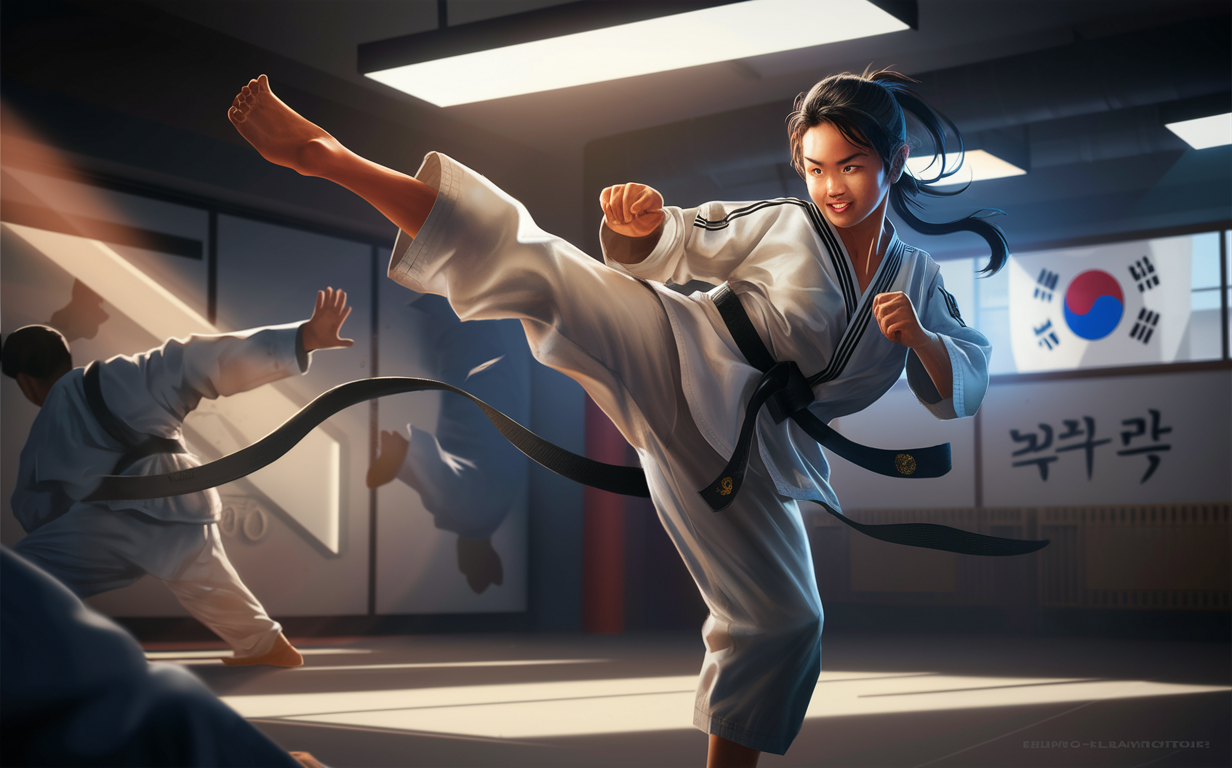
Many people have successfully used Taekwondo techniques to defend themselves in real-life situations. Here are some testimonials from our Thrive7 Martial Arts community.
Testimonial from Sarah
“I was walking home late one night when someone tried to grab me. Thanks to my Taekwondo training, I was able to use a knife-hand strike to fend them off and run to safety. I can’t thank my instructors enough!”
Testimonial from Mike
“Taekwondo has given me the confidence to handle myself in any situation. I once had to use a front kick to stop an aggressive person from attacking me. It worked like a charm.”
The Importance of Regular Practice
Regular practice is essential for mastering Taekwondo techniques and maintaining the physical and psychological benefits it offers.
Class Schedules
At Thrive7 Martial Arts, we offer classes daily for kids and adults. Consistency is key to ensuring you are always prepared to defend yourself.
Private Lessons
For those looking for more personalized training, we offer private lessons. These one-on-one sessions can help you focus on specific techniques and improve your skills more rapidly.
The Evolution of Taekwondo in Modern Self-Defense
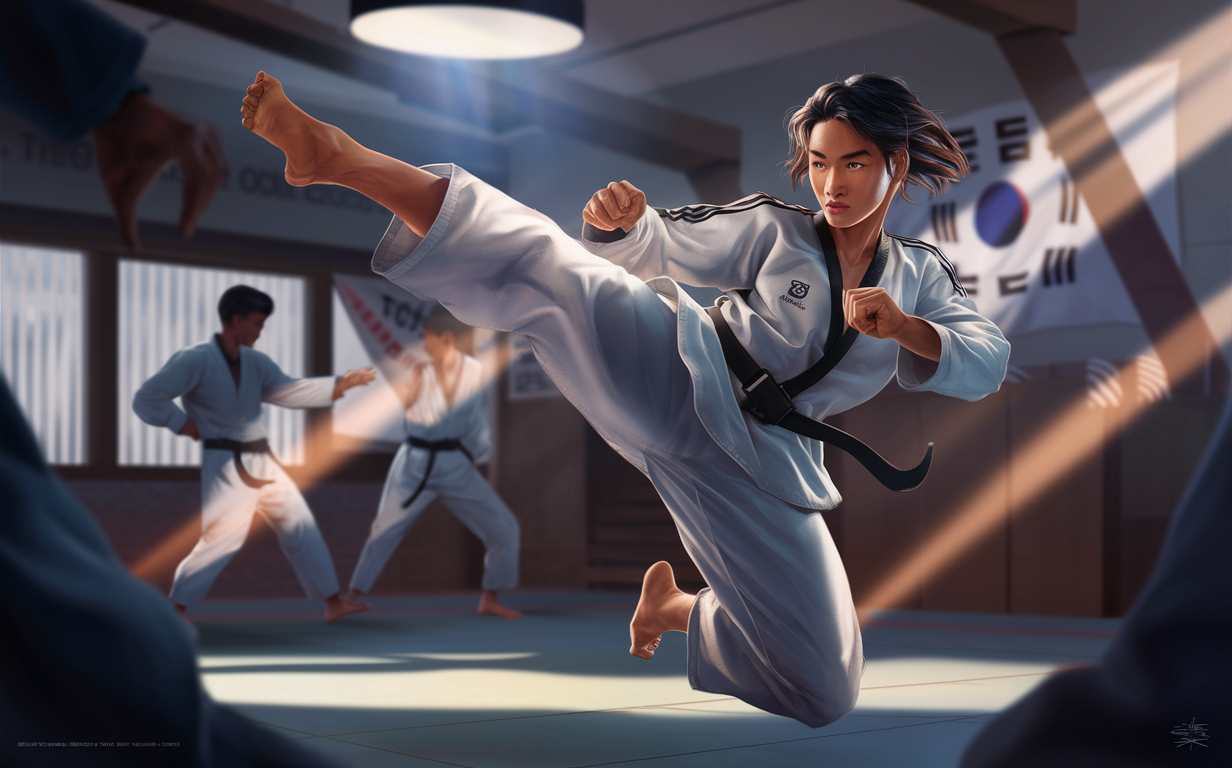
Taekwondo has evolved over the years to adapt to modern self-defense needs. It incorporates techniques and principles from other martial arts to provide a well-rounded defense system.
Integration with Other Martial Arts
Many Taekwondo schools now include elements of Kickboxing, Judo, and Brazilian Jiu-Jitsu to offer a more comprehensive self-defense program.
Kickboxing Techniques
Kickboxing techniques are particularly useful for close-quarters combat, complementing Taekwondo’s long-range kicks.
Judo and Brazilian Jiu-Jitsu
These martial arts offer grappling and ground-fighting techniques, providing additional layers of defense.
Technological Advances in Training
Modern technology has also impacted Taekwondo training. Virtual reality and online classes provide new ways to learn and practice techniques.
Key Components for Effective Self-Defense in Taekwondo
To be effective in self-defense, Taekwondo practitioners must focus on several key components.
Situational Awareness
Being aware of your surroundings is the first step in self-defense. Taekwondo teaches you to be mindful and alert, helping you avoid dangerous situations.
Reaction Time
Quick reaction time is crucial. Taekwondo drills are designed to improve your reflexes, ensuring you can respond swiftly to any threat.
Confidence and Calmness
Staying calm and confident during a confrontation can make a significant difference. Taekwondo training helps you manage stress and remain composed under pressure.
Measuring Progress in Taekwondo
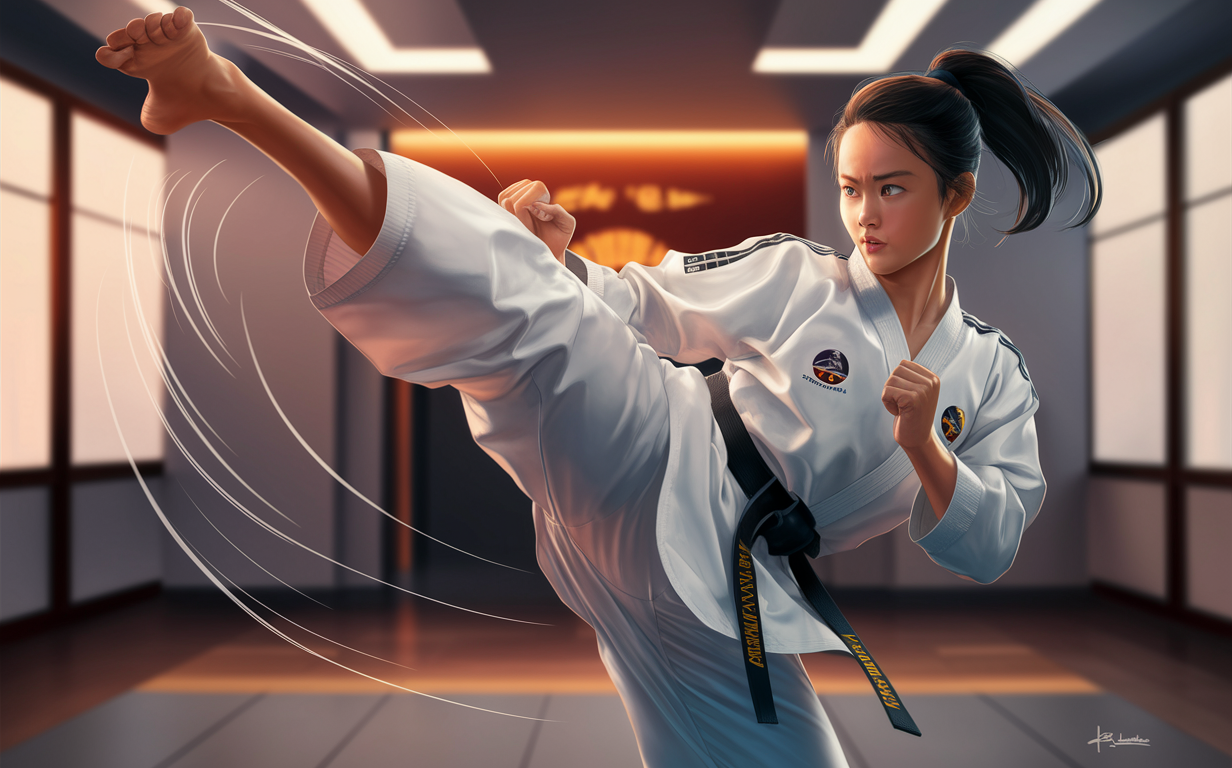
Progress in Taekwondo is often measured through belt ranks, but self-defense proficiency goes beyond just belt color.
Belt System
The belt system is a traditional way to measure progress. Each belt level represents a new set of skills and techniques mastered.
Real-World Application
Real-world application is the ultimate test of your skills. Participating in sparring sessions and self-defense drills helps you gauge your readiness.
Table: Belt Levels and Skills
| Belt Level | Skills Mastered |
|---|---|
| White | Basic kicks and strikes |
| Yellow | Simple combinations |
| Green | Intermediate techniques |
| Blue | Advanced kicks and defenses |
| Red | Complex combinations |
| Black | Mastery of techniques |
Common Myths About Taekwondo for Self-Defense

There are several misconceptions about Taekwondo’s effectiveness for self-defense. Let’s debunk some of these myths.
Taekwondo is Only About High Kicks
While high kicks are a significant part of Taekwondo, the art includes a wide range of techniques, including hand strikes and blocks.
Taekwondo is Not Practical
Some people believe Taekwondo is not practical for real-life situations. However, the training includes practical self-defense scenarios and techniques that are highly effective.
You Need to Be in Great Shape to Start
Anyone can start Taekwondo, regardless of their fitness level. The training helps you improve your fitness over time.
How to Get Started with Taekwondo for Self-Defense
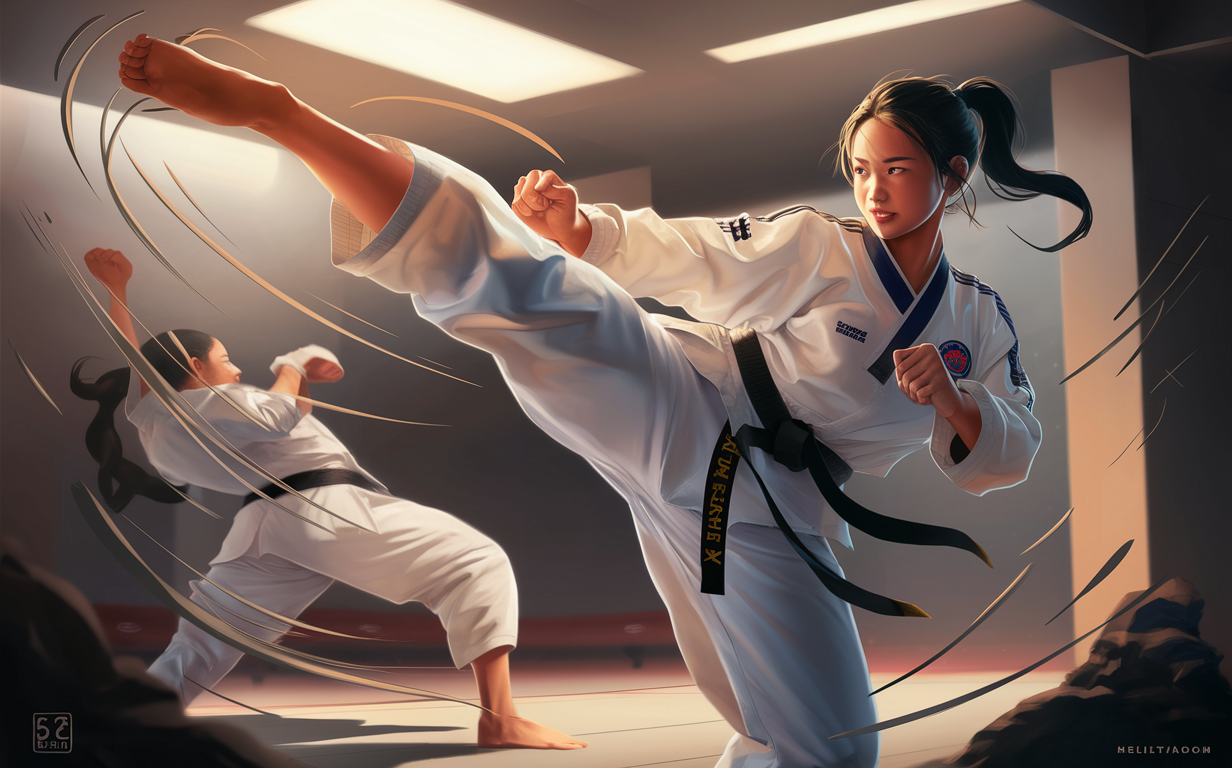
If you’re interested in learning Taekwondo for self-defense, here are the steps to get started.
Find a Reputable School
Look for a school with experienced instructors and a comprehensive curriculum. Thrive7 Martial Arts is an excellent choice for those in the Placentia area.
Attend a Trial Class
Many schools offer trial classes. This is a great way to get a feel for the training environment and see if it’s a good fit for you.
Commit to Regular Practice
Consistency is key. Commit to attending classes regularly to see significant improvements in your skills and fitness.
List: Essential Gear for Taekwondo Training
- Uniform (Dobok)
- Belt (Obi)
- Protective Gear (Headguard, Mouthguard, Gloves)
- Training Mat
Conclusion
Taekwondo is a highly effective self-defense system that offers numerous physical and psychological benefits. Whether you’re looking to improve your fitness, boost your confidence, or learn practical self-defense techniques, Taekwondo has something to offer. At Thrive7 Martial Arts, we provide top-quality instruction in a welcoming environment. Join us today and start your journey towards becoming a more confident and capable individual.
FAQs
What age is appropriate to start Taekwondo?
Taekwondo is suitable for people of all ages, from children as young as 4 to adults.
How often should I practice Taekwondo for effective self-defense?
Consistent practice, at least 2-3 times a week, is recommended for mastering self-defense techniques.
Can Taekwondo help me in other areas of life?
Absolutely. The focus, discipline, and confidence gained from Taekwondo can positively impact various aspects of your life, including academics and professional endeavors.

